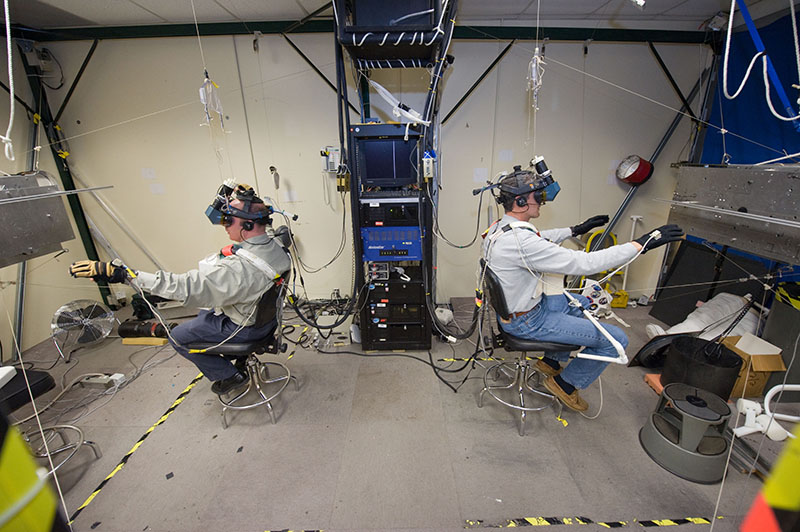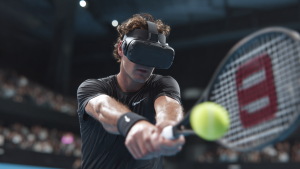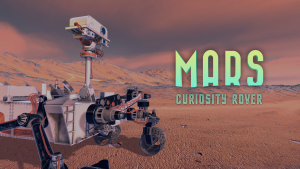How NASA is Using Virtual and Augmented Reality to Train Astronauts
Education | April 11, 2016
Virtual reality; is no longer a thing of the future – it is progressively permeating through every niche of the society. Whether it is education, law enforcement or just recreational activities, we are finding more and more uses of stepping into an engineered world.
So, it comes as no surprise that National Aeronautics and Space Administration (NASA) is extensively employing virtual reality to better acclimatize its astronauts to conditions they will experience once they step across the Earth’s boundaries. Here we take a look at a brief overview of this development.
We help companies improve their team’s performance with our professional VR training solutions.
Learn more
NASA’s Virtual Reality Playground
The crux of NASA’s expansive Virtual Reality laboratory is to train astronauts in the aspect of spacewalking. Spacewalking is a maneuver in which the astronaut leaves the environment of a spaceship and ventures out into space to perform a required action, such a replacing a faulty module on the spacecraft.
The most common point of spacewalking is the International Space Station (ISS), a collaborative multi-country artificial satellite. The ISS has been in-orbit since 1998 so there are times when the satellite needs some repair work done on its exterior. This is when a team of two or more astronauts exit the ISS and fix the issue while spacewalking.
In the past, the problem with spacewalking was that you didn’t know what to expect unless you have spacewalked before. So, NASA researchers, in an effort to reduce mishaps began researching on a virtual way to experience spacewalking in the mid-1980s. The fruit of which can be seen in NASA’s VR lab. Now, almost all astronauts who are deployed on the ISS know what to expect when they step outside their habitable satellite.
NASA’s VR Lab offers a rich virtual reality experience to its astronauts. There is the conventional, graphical 3-dimensional world of the ISS. Using a combination of a headset, haptic feedback gloves, and motion trackers, it gives the astronaut a virtual experience of being outside the ISS. Every segment of the station is modeled in a complete way; with all cables and components.
So, when an astronaut wears the gear they can perform a virtual spacewalk, grab objects and explore the space station in detail. This allows them to be acclimatized with the ISS’s outer structure so they are not at a relative loss when doing a spacewalk.
Here is a video from Gizmodo about the VR Lab:
Then there is the Charlotte robot, it works to circumvent a significant disadvantage of the previous VR setup – the ability to feel objects. It is a web-like structure that is controlled by a central computer that uses advanced physics to dictate how an object would feel in the microgravity of the space; their mass, moments of inertia, everything. At the center of the Charlotte, the robot is the object that is being simulated. The brilliant thing about this robot is that it doesn’t require a full-scale model.
The final component of NASA’s VR Lab is the virtual Simplified Aid for EVA Rescue (SAFER) unit. It is involved in the simulation of an astronaut’s detachment from the ISS harness during a spacewalk and drifting away into space. In this scenario, an astronaut would ideally use the nitrogen-propelled SAFER system to get back to the space station. So, the VR experience deals with the deployment of this unit and finding the route back to the ISS – a glorified flight simulator of sorts.
Augmented Reality and onwards
Another important development in NASA’s immersive training is the setup’s collaboration with Microsoft in an augmented reality endeavor codenamed as Project Sidekick. It involves the usage Microsoft’s HoloLens, the world’s first unconnected holographic computer which enables for its wearer to witness and interact with holograms in high definition while also listening to them in surround sound.
Sidekick will utilize HoloLens in order to facilitate communication between astronauts and their ground staff. This would mean that astronauts can use this holographic technology for overlaying instructions, doing face-to-face communication, interacting remotely with coworkers, as well as maintaining an inventory.
However, this project is in its infancy and as of now, it isn’t pure augmented reality because it requires human help. For example, in a September 2015 demonstration of Sidekick, astronauts used it for interacting with objects around them but only with the aid of an expert that was monitoring their inputs via a remote Skype connection, and sending in the required feedback.
Another project of NASA involving the HoloLens is OnSight. It pertains to using the headset’s augmented reality properties to connect scientists and engineers with the environment of Mars using a feed from the Curiosity rover.
This stems from the fact that NASA cannot yet put their astronauts physically on Mars. So, with Onsight, they are planning to put their scientists on Mars in a virtual manner with the ability to control the rover’s explorative functions. This can be a potential boon for researchers concerned with Mars’ environment and geology.
In conclusion, NASA’s research and collaborative efforts are really taking space travel to new frontiers, while making their astronauts more adept at tackling the unforgiving environment of space.
The number of developments in this sector is only going to grow in the future.
Subscribe to our newsletter
We write about the use of Virtual Reality for non-gaming applications.











